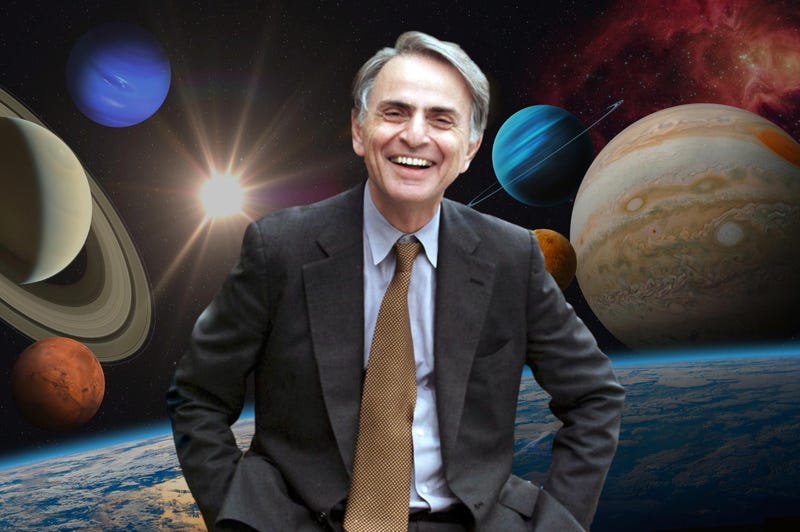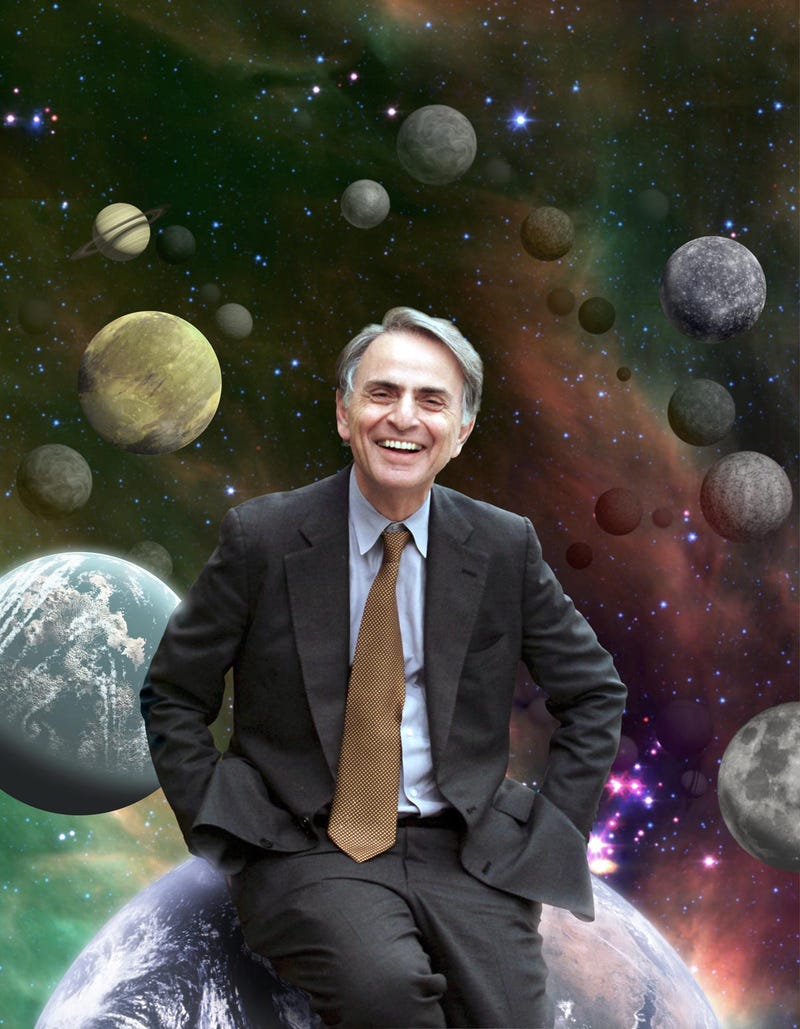
Though we all have differences, there’s one commonality that has prevailed for all of humanity: we are all floating on a rock, flying through outer space at over a million miles an hour.
Thanks to the rapid advancement of technology in the past century, we can observe much more of the universe than we ever thought possible.
The scale and sheer size of the universe make it impossible to truly learn everything, but it doesn’t mean we shouldn’t try.
CARL SAGAN DAY
November 9th is Carl Sagan Day! On what would have been his 88th birthday, space enthusiasts across the country celebrate Sagan's time on Earth, and the astronomical achievements he made.
Known as the "astronomer of the people," Sagan was an astronomer, cosmologist, astrobiologist, astrophysicist, science communicator, and TV host. He is most known for his 1980 'Cosmos' series on PBS in which he explored the vast Universe and educated the masses about the cosmos.
'Cosmos' became one of the most watched PBS series of all time, and is still celebrated 4 decades later.

Aside from his work on television, Sagan also made a noteworthy impact on the American space program, according to NASA. Beginning in the 1950s, he worked as a consultant to NASA and even briefed the astronauts in the Apollo missions before their journey to the moon.
Sagan helped orchestrate multiple other NASA missions such as Viking trips to Mars, and the Voyager 1 and 2 missions. He also assisted in solving several scientific mysteries like the Martian season changes and the reddish tint of Titan.
Above all, Sagan was a visionary, and constantly looked to the future with a persistent pursuit of knowledge and making the unknown known. In 1996, Sagan even recorded a message for future astronauts who will one day visit Mars.
“Somewhere, something incredible is waiting to be known.” ― Carl Sagan
In 2007, a DVD copy of that message actually physically made it to Mars, attached to the NASA probe, Phoenix.
Sagan became the most famous scientist and astronomer in America. This was partly because of his vast knowledge of the subject he was teaching, but what really set him apart was his ability to explain the vast, mystifying Universe in a way that no one had before.
He was often referred to as "the scientist who made the Universe clearer to the ordinary person."
"He was part of the original group that got together to promote the mission to NASA and he served as an interdisciplinary scientist on the mission team from the beginning. He was a great human being who shared with everyone his excitement about the exploration of the Universe," said Dr. Torrence Johnson, a team member from NASA's Galileo mission.
Sagan's work alongside his lifelong collaborator and wife Ann Druyan earned him a Pulitzer Prize in 1975. His series 'Cosmos' has become one of the most-watched shows in history.
Even posthumously, he was honored by the National Science Foundation in 1996 when they stated that his "research transformed planetary science… his gifts to mankind were infinite."
Carl Sagan lost his battle with myelodysplasia, a rare bone disease, in 1996. He was 62 years old when he died.
So, each year on Sagan's birthday, people across the country and around the world celebrate the life and achievements that he made, as our understanding of the cosmos and space exploration would not be the same without his teachings. As he said himself, Carl Sagan was truly one of a kind.
“Every one of us is, in the cosmic perspective, precious. If a human disagrees with you, let him live. In a hundred billion galaxies, you will not find another.” ― Carl Sagan
LISTEN on the Audacy App
Tell your Smart Speaker to "PLAY 1080 KRLD"
Sign Up and Follow NewsRadio 1080 KRLD

